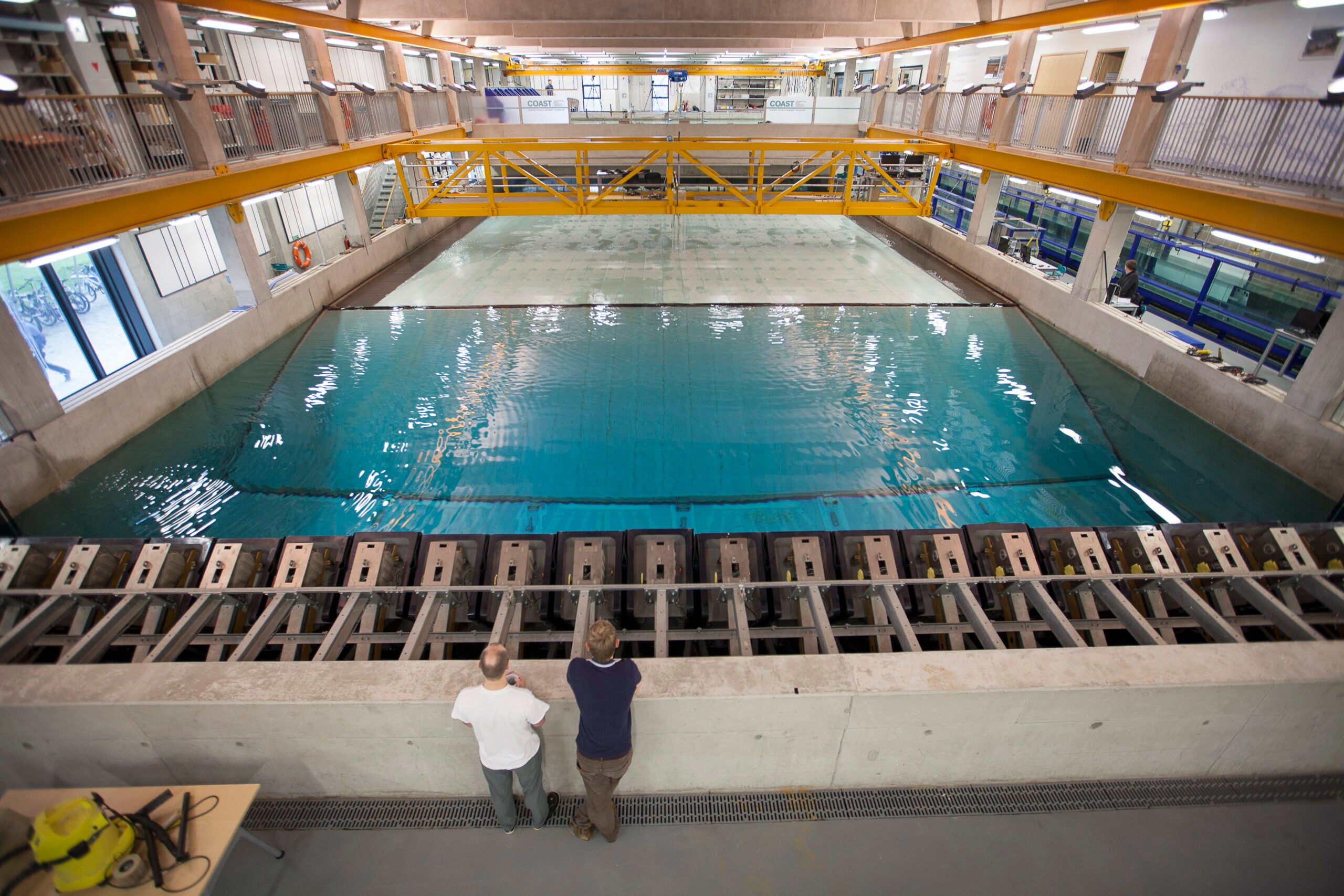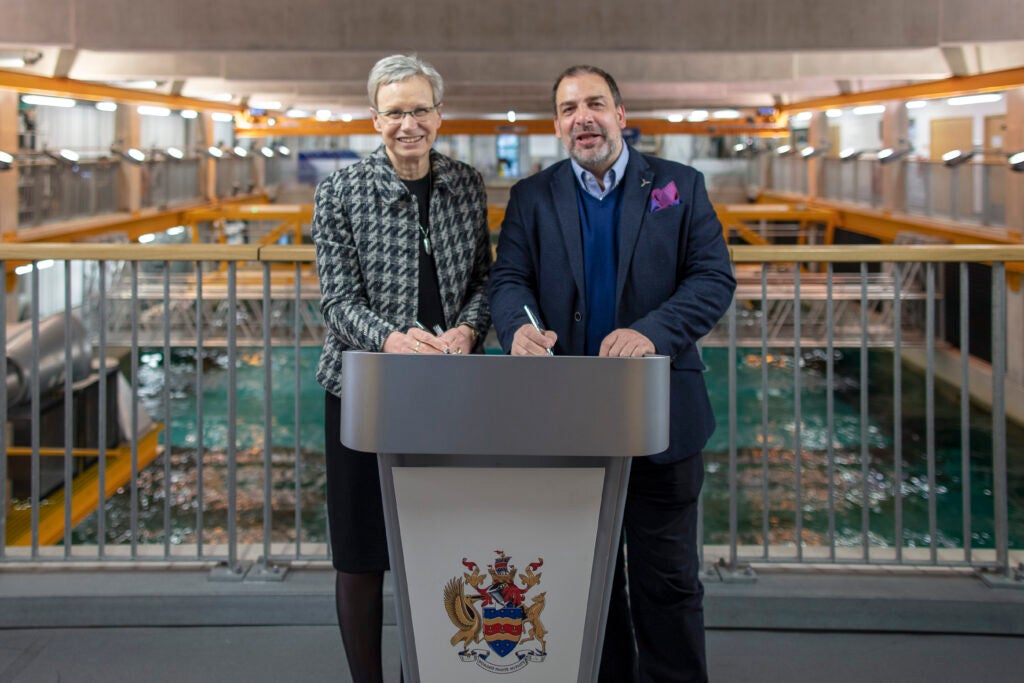
The University of Plymouth and the Offshore Renewable Energy (ORE) Catapult have established a new programme to develop offshore renewable tech: the Collaborative Offshore Renewable Energy Subsea Systems (COSS) research accelerator.
There’s pressing need to hasten progress. In order to attain the 8,000TWh required in 2030 under the International Energy Agency’s Net-Zero Emissions by 2050 scenario, the world must increase its electricity generated by wind by an average of 18% per year during 2021-2030.
It is also necessary to raise annual capacity additions to 310GW of onshore wind and 80GW of offshore wind.
With the UK Government itself seeking 50GW of offshore wind by 2030, projects such as these could be key. Can this research collaboration hasten the scale and pace of deployment for UK renewables, and share offshore wind knowledge across the globe?
What will the new partnership achieve?
“COSS is a collaborative partnership between the University of Plymouth and ORE Catapult,” explains Simon Cheeseman, sector lead for wave and tidal energy at ORE Catapult, and Deborah Greaves OBE, professor of ocean engineering at the University of Plymouth.
“Both parties meet regularly to identify potential R&D projects and to combine their respective networks, with a view to seeking industrial sponsors for those projects. This engagement with industry is designed to encourage and stimulate research activity that draws on the specialist expertise held in both the ORE Catapult and the university.
“It is also designed to take advantage of the university’s facilities, providing research engineers and sponsored PhD students to support collaborative projects delivered through the partnership. Where appropriate, the local supply chain will be invited to join the collaboration to help resolve technical challenges and build up its own capacities and capabilities.”
It’s evident this is a scaling up to hasten fossil alternatives and enable net-zero faster, and looks to take advantage of particular benefits unique to the University of Plymouth.
“The south-west is home to a wealth of expertise in emerging ORE technologies, and unique natural assets,” say Cheeseman and Greaves.
“It draws from a rich heritage of marine and maritime expertise and, from a university perspective, we have been pioneering new technologies and assessing their potential impacts on marine and coastal environments for over two decades.”
Speeding up the pace of deployment
Through the initiative, the partners will seek to accelerate offshore wind, wave and tidal power, with a particular emphasis on floating wind.
“The UK Energy Security Strategy has announced more demanding targets for 2030 and beyond,” say Cheeseman and Greaves. “With ORE Catapult having a presence in the region and the university hosting a number of world class facilities, the COSS represents a pragmatic way to join forces and drive innovative solutions that contribute to net-zero.
“It is also a means of helping the supply chain demonstrate its capability and grow its capacity ahead of the anticipated Celtic Sea procurement calls over the coming years.”
In addition, the new partnership aligns with the university’s leadership of the national Supergen Offshore Renewable Energy) Hub. This is a $10.7m (£9m) million Engineering and Physical Sciences Research Council-funded project, which provides aims to connect academia, industry, policymakers and the public to encourage innovation in offshore wind, wave and tidal energy.
Regarding specific drivers and targets for COSS, these are still being defined: “ORE Catapult and the university are still in the process of outlining key performance indicators that will govern the annual throughput of projects and the scale of industrial collaboration,” say Cheeseman and Greaves.
“The partners are among those involved in a number of multi-million pound initiatives, such as the $46.2m (€45m) Tidal Stream Industry Energiser project and the $7.6m (£6.4m) Cornwall FLOW Accelerator initiative, but there is no direct funding associated with COSS.
“We are working on the basis of securing industry sponsorship to fund projects and industry PhD places.”
Wind research and development focussing on offshore monitoring and repairing
Offshore, self-evidently, is a tough environment. As such, a focus on the monitoring and repair side of the tech will be key.
“The skills and capability of research and development in the south-west, and University of Plymouth in particular, will centre around the hydrodynamics of floating structures, offshore engineering and control systems,” say Cheeseman and Greaves.

“Through these, we are looking to manage the interaction of wave, tide and metocean conditions with wave, tidal and floating offshore wind platforms. Linked to this is the study and development of autonomous marine systems and maritime cyber security for the inspection, maintenance and repair of offshore systems and environmental monitoring.”
Additionally, two PhD studentships are due to start this autumn, covering integrated modelling of floating offshore wind turbine systems (FOWTS). This aims to develop a nonlinear coupled model for design.
Researchers will also complete work on real-time hybrid testing for physical modelling of new high-capacity floating offshore wind turbines. They hope this will provide a step-change in the ability of the offshore renewable energy community to conduct scale modelling of FOWTS.
Net-zero needs “more than just numbers on paper and goodwill”
The partners explain that this new research collaboration has been established in direct support of the UK Government’s expanded ambition to deploy up to 50GW of offshore wind by 2030, with up to 5GW provided by floating offshore wind.
This should be more than enough to power every home in the UK and support UK commitment to achieve net-zero by 2050.
“To help the country meet its net-zero greenhouse gas emissions target by 2050, all forms of ORE will be required,” says Greaves .
“Although they are at different stages of maturity, the need to maintain and accelerate research and development is paramount. We know the natural resources are there and – across science and industry – we have the expertise to harness them.
“However, the fact remains that if we are to truly realise the sector’s potential it needs more than just numbers on paper and goodwill. The sixth carbon budget and balanced pathway, recommended by the Committee for Climate Change, would require an investment programme worth around $59.7bn (£50bn) each year from 2030 to 2050.
“But, more than ever before, future emissions reductions will require people to be actively involved and that must be embedded throughout policy.”
From the ORE Catapult perspective, the programme remains fully committed to supporting the transition from fossil fuels at pace and scale.
It’s worth noting the ORE Catapult has operations in Glasgow, Blyth, Levenmouth, Aberdeen, the Humber, the East of England, the south-west and Wales and operates a collaborative research partnership in China.
Therefore, there is ample scope to share gleaned knowledge globally and advance other economies, not just the UK’s. All in all, this is a fascinating space to keep an eye on, awaiting new tech to shift further the role of renewables in the energy transition.



